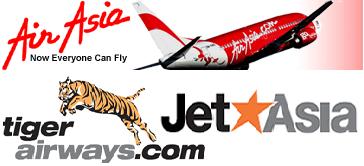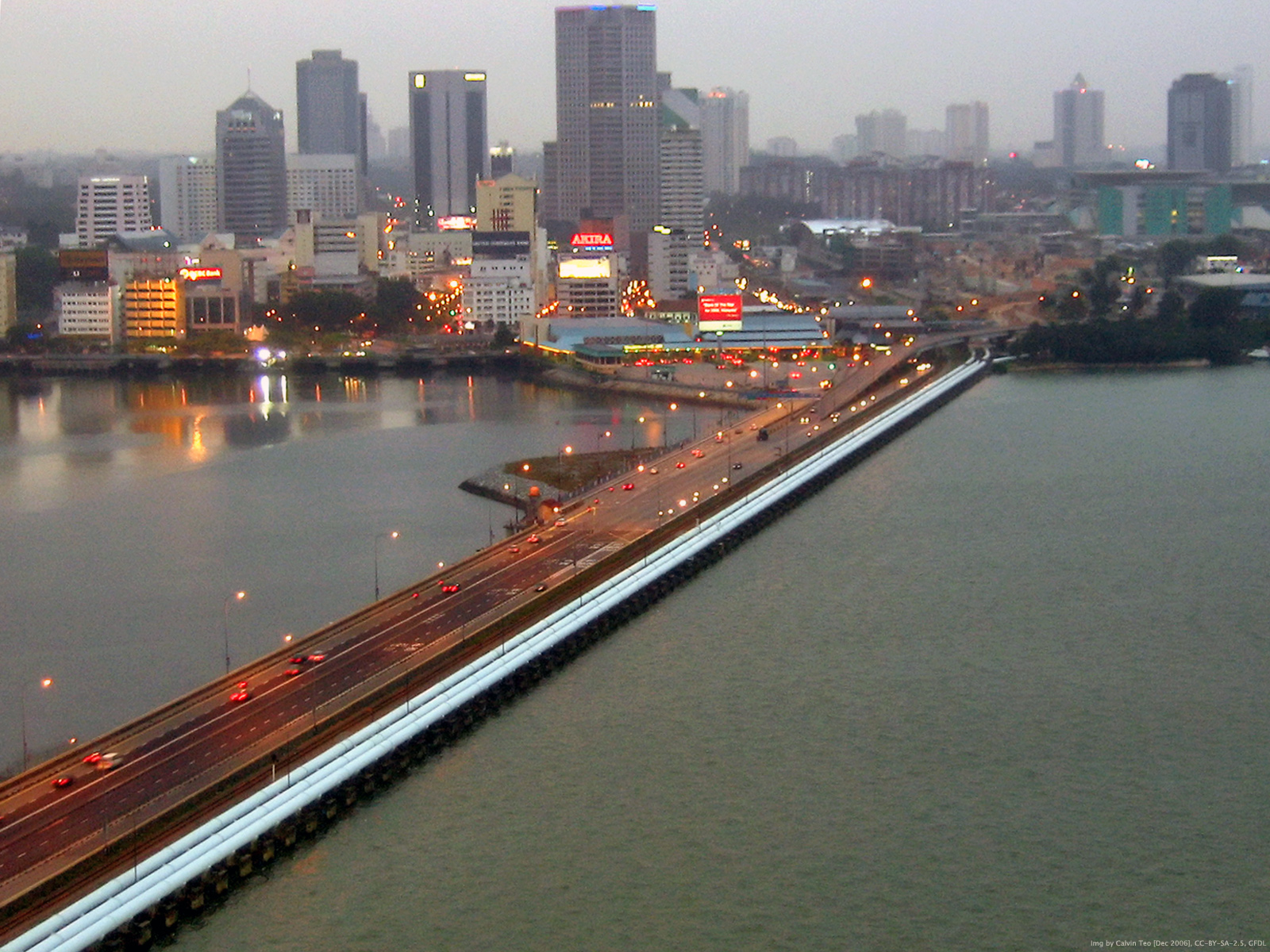BT profiled DBS Group Holdings chairman Koh Boon Hwee in its Raffles Conversation series today. He sounds like a real talented man with so many big job titles and interesting job experience. But I often wonder which business is his ultimate passion.
It would have been interesting if Boon Hwee had also talked about recent changes in DBS and departed CEO Jackson Tai and COO Frank Wong.
Maybe, it's a story for another day.
DBS Group Holdings' chairman Koh Boon Hwee talks to KENNETH JAMES about his multiple roles as private investor, corporate leader and educationist
 GOOGLE the subject of this Raffles Conversation and one is rewarded with this unexpected gem: 'I Love Koh Boon Hwee' T-shirts, complete with bright red heart, for sale at Amazon.com.
GOOGLE the subject of this Raffles Conversation and one is rewarded with this unexpected gem: 'I Love Koh Boon Hwee' T-shirts, complete with bright red heart, for sale at Amazon.com.
Told about it, Koh Boon Hwee bursts out laughing. 'You've got to be kidding me!' he says. 'Anyway, who on earth would buy one?'
Well, let's see. As one of corporate Singapore's most prominent figures, Mr Koh no doubt has his detractors, but there are probably a whole lot more admirers of his corporate story.
After all, his track record is impressive. Our wide-ranging conversation takes place in a meeting room across from his office at the top of DBS Building Tower One; he is chairman of DBS Group Holdings and DBS Bank, the country's largest bank. Prior to this appointment, from July 2001 to December 2005, he was chairman of Singapore Airlines, where he successfully shepherded the iconic international carrier through one of the most turbulent periods in aviation history.
From 1986 to 2001 he was chairman of the Singapore Telecom Group (SingTel), overseeing its transformation from statutory board to regional communications powerhouse. All this while, for 10 years from 1991, he headed the Wuthelam Group as its executive chairman.
On the education front he's enjoyed a long association with Nanyang Technological University (NTU), where he currently serves as chairman of the Board of Trustees.
And this doesn't even include what Mr Koh considers his main vocation: investing in, and guiding, a host of companies in Singapore and abroad.
Not bad for someone whose earliest career 'highlights', following his recruitment to US multinational Hewlett-Packard's Singapore office in 1977, were a couple of million dollar ventures that famously bombed.
That's a story Mr Koh has told with relish many times over. But it's clear that the underlying theme, tolerating and even welcoming failure as integral to the entrepreneurial process, remains as relevant to him now as it did decades ago.
'My partners and I have often backed people knowing full well that we might lose the money completely,' he says at one point. 'But we thought that what the person might learn might actually make him a lot more successful in his second venture. And that has often been the case.'
Which is why he considers himself not just an investor but an 'investor-builder'. Drawing a comparison with venture capitalists, he explains: 'In my mind the venture capitalist has a very specific role; most of the time they are investing money that is raised from other people. Because the fund has a life, you have to plan an entry, and then you make your money by planning an exit.
'I think of myself as an investor-builder because, first of all I'm not managing third-party money, I'm usually investing for myself. (And) to me an investor-builder is someone who doesn't have that time frame sitting in front of him. He can take a five-year, a 10-year, a 20-year perspective. And he can grow with that business from startup through expansion to growth to maturity. Does it mean you will never sell the business? The answer is no, obviously. But is it in the forefront of your mind? Probably not.'
Such an approach allows him the luxury of looking beyond immediate bottomline considerations, although he emphasises: 'Let me say that your judgement is more often wrong than correct. And that's the nature of investing, especially in startup businesses.'
Having said that, he willingly shares his modus operandi: 'I've often been asked, what do I look for? I would say that the first thing I look for is the person behind the idea. Why is he interested in it, how committed is he, what will his tenacity be like when he faces adversity? You know, these are all issues related to soft judgement, and that isn't going to be brought home by going to business school.
'And if the person passes muster, then you take a look at the PowerPoint presentations and the spreadsheets, to get an idea of how large the business will be, and how it might stack up against competition.'
Pressed for an example, he initially declines - 'I'm not so sure that the people who are behind those businesses would like it necessarily publicised' - but finally relents.
He relates: 'One of our more successful investments has been in a company in China that manufactures acoustic components for the mobile handphone market. We were drawn to that investment primarily by the man who was behind it. He was young, he was obviously very smart, but more important than that, I think he had the right attitude.
'He was prepared to work, and you had the feeling in talking to him that although he had this business in mind, and he had a plan for executing it, and he had a passion for it, that it wasn't just about making money for himself. He wanted to really make an impact, to be a factor in at least the part of the business that he was in.'
Mr Koh and his partners decided to back the entrepreneur, who 'proceeded to grow the company very well, and it was eventually listed on the Hong Kong Stock Exchange and he still runs it very successfully'.
So has Singapore finally imbibed this entrepreneurial culture, even embracing failure?
'Oh I would definitely think so,' Mr Koh replies instantly. 'I would say that we are a lot more open, a lot less quick now to stigmatise people because of failure. I think lots of people who may not have been successful the first time get a second chance. Is it quite like Silicon Valley yet? The answer is no, but I think Singapore has made vast improvement.'
But he has some pertinent advice for would-be entrepreneurs here: 'You continue to hear complaints about people starting up and not being able to find startup money or venture capital and things like that. I hear that all the time. My own take on that is there is plenty of money for investment. But getting that money does require hard work on the entrepreneur's part. It does require a soundly thought-out strategy.
'And very often that's not the case in Singapore. The weakness I see is not in engineering skills or technology skills or research and development, it is in marketing and sales. A business plan without addressing a market, without an assessment of your competition, without telling people how you intend to distribute and sell the product, is highly incomplete and therefore unlikely to be funded.'
Mr Koh's emphasis on people and the long term - the 'builder' part of being an investor-builder - is an advantage he brings to the boardrooms of the mega-companies he has been involved with.
At SingTel it helped him guide the stat board through what he readily concedes was a 'very painful' privatisation process.
He recalls: 'In three to four years the organisation shed over 4,000 people, which was 30 per cent of its staff at that point in time. But it was essential to prepare the organisation for competition. Do I enjoy downsizing? The answer is obviously no. I've done it so many times in my life. Every time it's ...' He doesn't complete the sentence.
He continues: 'As a manager, the minute you start thinking of people as digits you can grow and downsize, I think you need to get out of the business, because it means that whatever's left of you as a human being is probably gone.'
SIA was challenging for different reasons. He piloted the airline through a series of storms: September 11 in 2001, the Bali bomb attack in 2002, SARS in 2003, record fuel prices in 2005. The carrier stayed profitable every year, and in fact had record profits in 2005. Even so, his speech to SIA staff when he was leaving was a starkly cautious one.
He explains: 'In a service industry you can have an idea, but the idea is just two to three months away from being followed by everybody else. The nature of the business isn't such that you can look for one big thing and knock everybody out. You must do all of the things that you're doing just a little bit better than the competition. The seats have to be a little more comfortable, your cabin crew has to be a little bit more helpful and polite, your aircraft have to be a little bit more punctual, hopefully 100 per cent ... so that all of those little things add up.'
Now, with impeccable timing, he is chairman of a major bank in a time of global financial crisis. He exclaims: 'I can't think of a better time. You learn a lot.' The way Koh Boon Hwee says it, it sounds like a clarion call. You can see the builder taking charge.
The next education challenge for Singapore
EDUCATION has always been a big thing for DBS Group Holdings chairman Koh Boon Hwee, who is also chairman of the Board of Trustees of Nanyang Technological University (NTU).
But while the education system here is, in his words, 'one of the greatest achievements of Singapore', there is a need now to take higher education even higher, he says.
He explains: 'Two things are happening. First of all, the environment in Singapore is changing, and the universities have to adapt to that as well. Let me give you an example. For the first 20 years of NTU and its predecessor organisation NTI (Nanyang Technological Institute), the goal really was to ensure that we produced enough technical and engineering manpower to fund Singapore's demands, and the technology investors who would be coming in. And that's what we did. Starting from almost zero it went up to a student population of 20,000-21,000, the majority of whom were in engineering. And it's one of the reasons companies come to Singapore.
'But the state of Singapore's economic development now is that we are coming to the stage where it isn't just about providing manpower to fund industry, it is about providing manpower to fund research labs. Which basically means the university cannot just continue to produce manpower that can keep the machinery humming and the plant operating. You now have to produce people who are able to say, how can I improve the design of the plant, how do I improve the design of the product, what new ideas can I have for the next drug, or whatever it is? That's a quantum step up in the quality of manpower you need to produce. And that is the challenge that NTU is rising to.'
Mobile students
The other challenge is that, even in education, globalisation has had an impact, he says.
'Students today are very, very mobile, especially those who come from countries where their parents can afford it. Even if they can't afford it, some of the best universities in the world, the Harvards and the Yales, are now saying, 'We don't care whether you're from India, or from China, as long as you've got the brains, we will fund that education'.
'More important, universities now are ranked. Students all over the world see it, faculties see it. If you are a world class faculty (member), are you going to agree to work in the 212th university in the world, when you know that universities are recruiting all over? Well, today some of the best universities hire from all over the world, so the competition for professorial talent, for student talent, is becoming increasingly global.
'The challenge for NTU is to ensure that we accept those realities of the new environment and rise to that challenge. Which is what we're doing. We've just brought in a new provost, Bertil Andersson, (who is) very research oriented. We need to figure out a way to get our academic faculty to do not only teaching but research as well, and therefore you want to have a person who has spent his entire career steeped in this sort of thing.'
Research mindset
Mr Koh, who is also a member of Singapore's high-level Research, Innovation and Enterprise Council (RIEC), concedes that Singaporeans need to develop what he calls a research mindset.
'We don't have a lot of people who are steeped in R&D processes and protocols. We're not steeped in the idea that if we invest $100 million in R&D, maybe $80 million will be wasted, but somewhere along the line maybe $20 million of it may produce the next breakthrough idea. We're impatient, we have an 'instant-tree mentality', if we want a tree we're gonna plant it right now.
'The development of R&D isn't an instant-tree solution. You can try to shorten the process, which we're trying to do. With the help of the National Research Foundation and A*Star, we have been able to attract some really great scientists. And now we have to be patient.
'We can't say, now we've given you the environment and the funding, please win the Nobel Prize next year! It doesn't work that way. You've got to have the patience to let things develop, accept the idea that there will be some wastage, and you have to take it one step at a time.














